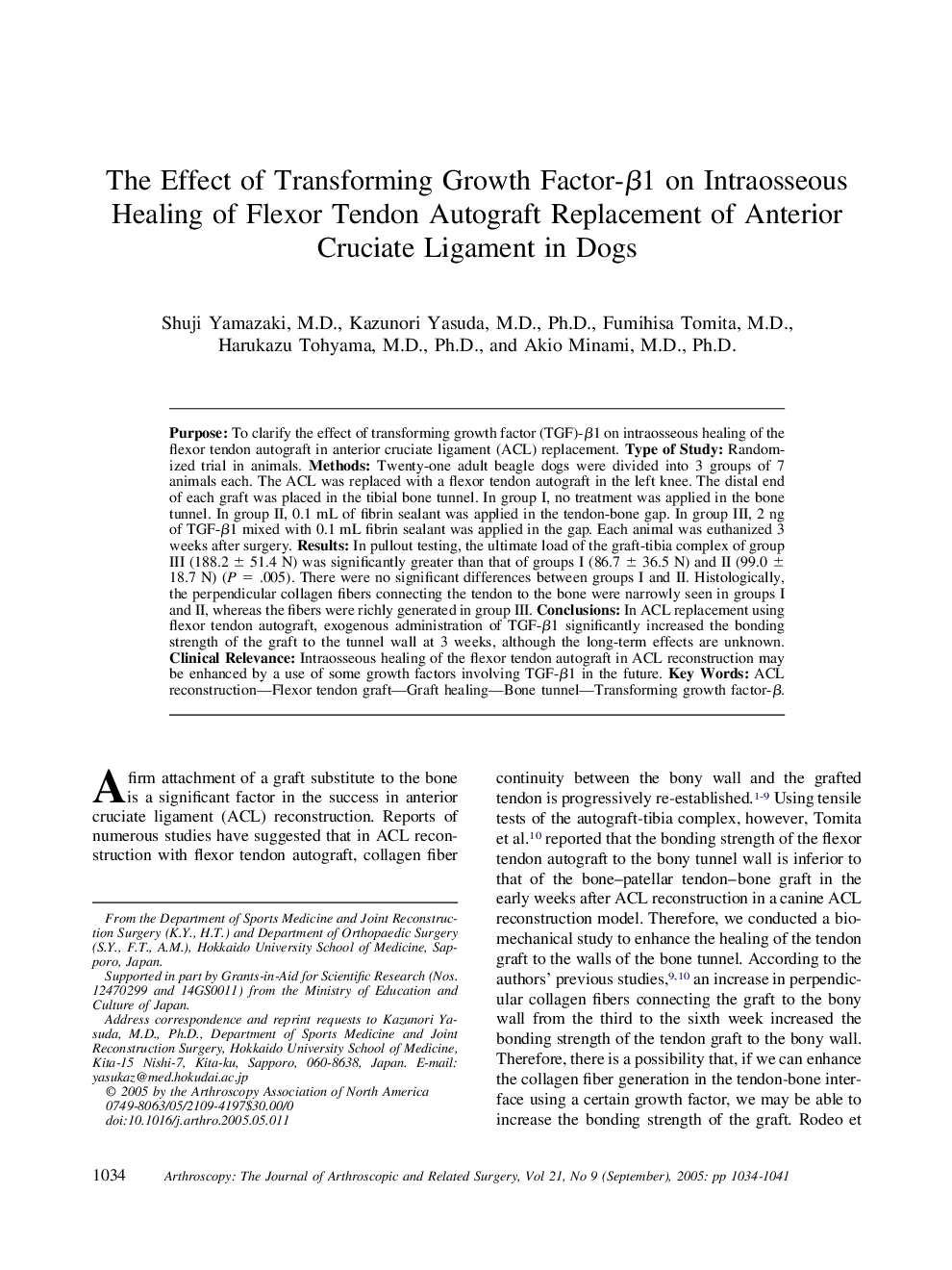| Article ID | Journal | Published Year | Pages | File Type |
|---|---|---|---|---|
| 10078858 | Arthroscopy: The Journal of Arthroscopic & Related Surgery | 2005 | 8 Pages |
Abstract
Purpose: To clarify the effect of transforming growth factor (TGF)-β1 on intraosseous healing of the flexor tendon autograft in anterior cruciate ligament (ACL) replacement. Type of Study: Randomized trial in animals. Methods: Twenty-one adult beagle dogs were divided into 3 groups of 7 animals each. The ACL was replaced with a flexor tendon autograft in the left knee. The distal end of each graft was placed in the tibial bone tunnel. In group I, no treatment was applied in the bone tunnel. In group II, 0.1 mL of fibrin sealant was applied in the tendon-bone gap. In group III, 2 ng of TGF-β1 mixed with 0.1 mL fibrin sealant was applied in the gap. Each animal was euthanized 3 weeks after surgery. Results: In pullout testing, the ultimate load of the graft-tibia complex of group III (188.2 ± 51.4 N) was significantly greater than that of groups I (86.7 ± 36.5 N) and II (99.0 ± 18.7 N) (P = .005). There were no significant differences between groups I and II. Histologically, the perpendicular collagen fibers connecting the tendon to the bone were narrowly seen in groups I and II, whereas the fibers were richly generated in group III. Conclusions: In ACL replacement using flexor tendon autograft, exogenous administration of TGF-β1 significantly increased the bonding strength of the graft to the tunnel wall at 3 weeks, although the long-term effects are unknown. Clinical Relevance: Intraosseous healing of the flexor tendon autograft in ACL reconstruction may be enhanced by a use of some growth factors involving TGF-β1 in the future.
Related Topics
Health Sciences
Medicine and Dentistry
Orthopedics, Sports Medicine and Rehabilitation
Authors
Shuji M.D., Kazunori M.D., Ph.D., Fumihisa M.D., Harukazu M.D., Ph.D., Akio M.D., Ph.D.,
